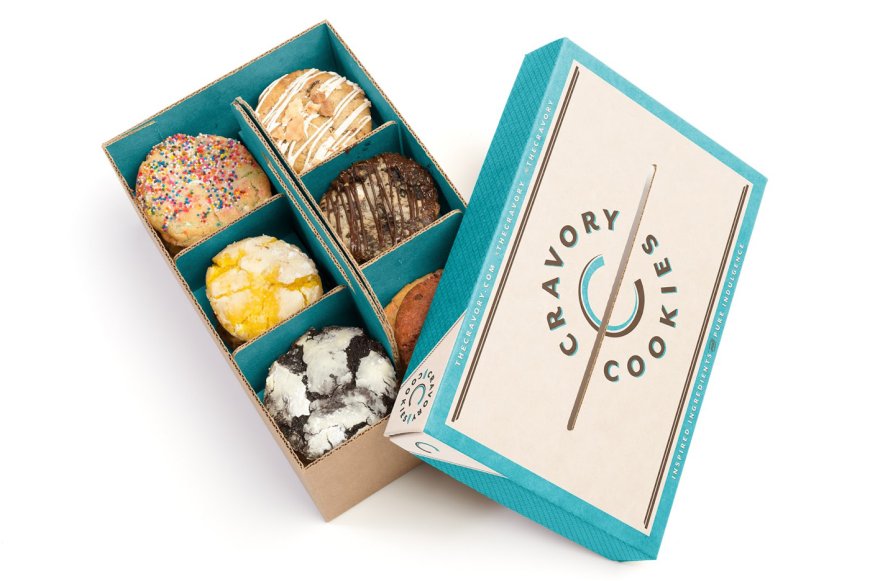Cookies in Disguise: Are You Really Getting What's on the Box?
Evaluating cookie consent boxes for GDPR compliance and UX. Pros, cons, and design options. - 123 characters

What Are Cookie Boxes?
Cookie boxes are specialized containers designed to hold and protect cookies during storage, transportation, and gifting. Their primary purpose is to keep cookies fresh, prevent them from breaking or crumbling, and maintain their delicious taste and texture. Cookie boxes come in various shapes, sizes, and materials, but they typically feature a rigid base and a separate lid or cover.
Common materials used for custom paper packaging boxes include cardboard and even rigid or corrugated for more decorative options. Cardboard and paperboard boxes are lightweight, cost-effective, and often feature attractive designs or patterns, making them popular choices for commercial and homemade cookie packaging. Plastic containers offer durability and transparency, allowing the contents to be visible. Tin boxes provide a classic and elegant look, while also providing excellent protection against moisture and air exposure.
Cookie boxes can range from simple and functional to ornate and decorative, depending on their intended use. For gift-giving or special occasions, cookie boxes may feature intricate designs, embellishments, or even windows to showcase the treats inside. Regardless of their style, cookie boxes serve as an essential packaging solution for preserving the freshness and quality of these beloved baked goods.
History of Cookie Boxes
Cookie boxes have a rich history that dates back centuries, with origins rooted in various cultures around the world. One of the earliest known uses of cookie boxes can be traced back to the Dutch, who would package their beloved speculaas cookies in decorative tins or wooden boxes during the 17th century.
As the popularity of cookies spread across Europe, so too did the need for containers to store and transport these delectable treats. In Germany, the traditional lebkuchen gingerbread cookies were often gifted in ornate boxes, while in England, the iconic Christmas pudding boxes were repurposed to hold festive biscuits and cookies.
The advent of the industrial revolution in the 19th century brought about mass production and commercialization of cookie boxes. Tin boxes became a popular choice, as they were durable, airtight, and could be easily decorated with colorful lithographs or embossed designs. Companies like Huntley & Palmers and Carr's of Carlisle in England, and the National Biscuit Company (Nabisco) in America, played a significant role in popularizing the use of decorative tins for packaging their cookies.
As time progressed, cookie boxes evolved from purely functional containers to becoming cherished keepsakes and collectibles. Manufacturers began to incorporate intricate designs, vibrant colors, and even holiday or seasonal themes into their cookie boxes, making them not just vessels for cookies but also decorative items for the home.
In many cultures, cookie boxes have also taken on symbolic and traditional significance. In Denmark, for instance, the iconic Royal Danish butter cookie tins are a beloved part of the holiday season, often repurposed as storage containers or decorative pieces. Similarly, in Japan, the intricate and beautifully designed cookie tins from companies like Yoku Moku have become coveted collectibles, with some even being auctioned off for significant sums.
Today, cookie boxes continue to be an integral part of the cookie-giving tradition, serving as both practical containers and elegant vessels for sharing these beloved treats with loved ones. From the humble beginnings of wooden boxes to the ornate and collectible tins of today, cookie boxes have evolved to become not just functional vessels but also cherished cultural icons.
Types of Cookie Boxes
Cookie boxes come in a wide array of shapes, sizes, and styles to suit different occasions and purposes. The most common types include:
Round Tins: These classic round tins with tight-fitting lids are perfect for gifting and storing cookies. They come in various sizes, from small individual portions to large family-sized tins.
Window Boxes: These boxes feature a clear plastic or cellophane window, allowing the delicious cookies inside to be visible. They make great gifts and entice buyers at bakeries.
Gable Boxes: These boxes resemble small milk cartons with a gable top, making them easy to open and close. They're popular for packaging individual servings or small batches of cookies.
Decorative Boxes: These boxes are designed with intricate patterns, vibrant colors, and festive designs, making them perfect for special occasions like holidays, weddings, or birthdays.
Bakery Boxes: Sturdy and stackable, these boxes are designed for commercial use in bakeries and cafes. They often feature ventilation holes to keep cookies fresh.
Tube Boxes: Long and cylindrical, these boxes are ideal for packaging long, thin cookies like biscotti or breadsticks.
Gift Boxes: Elegant and often adorned with ribbons or bows, these boxes are specifically designed for gifting cookies to loved ones on special occasions.
Snack Boxes: Compact and portable, these boxes are perfect for packing cookies for on-the-go snacking or picnics.
No matter the occasion or purpose, there's a cookie box style to suit every need, ensuring your delicious treats are presented and preserved in the most appealing and practical way possible.
Materials Used for Cookie Boxes
Cookie boxes can be made from a variety of materials, each with its own advantages and disadvantages. The most common materials used for cookie boxes include cardboard, plastic, and tin.
Cardboard
Cardboard is one of the most popular and cost-effective materials for cookie boxes. It is lightweight, easy to print on, and can be recycled. Cardboard boxes are also relatively sturdy and can protect the cookies during transportation. However, they may not be as durable as other materials and can be susceptible to moisture and damage.
Plastic
Plastic cookie boxes are often made from clear or colored plastic materials like polypropylene or polyethylene terephthalate (PET). These boxes are lightweight, shatter-resistant, and can showcase the cookies inside. Plastic boxes are also easy to clean and can protect the cookies from moisture and odors. However, they may not be as eco-friendly as other materials and can be more expensive.
Tin
Tin cookie boxes are a classic choice and can provide a nostalgic and elegant look. They are durable, moisture-resistant, and can keep cookies fresh for a longer period. Tin boxes can also be reused and repurposed for other purposes. However, they can be more expensive than cardboard or plastic, and may not be as easily customizable or printable.
When choosing the material for cookie boxes, it's important to consider factors such as cost, durability, appearance, and environmental impact. Some manufacturers may also offer custom or hybrid options, combining different materials to achieve the desired qualities.
Decorating Cookie Boxes
Decorating cookie boxes can be a fun and creative way to add a personal touch to your homemade treats or to make a special gift even more memorable. There are countless ways to decorate cookie boxes, ranging from simple and understated to elaborate and intricate designs. Here are some ideas and techniques to consider:
Simple Decorations
- Ribbons and bows: Tie a colorful ribbon or bow around the box for a classic, elegant touch.
- Stickers or labels: Use decorative stickers, labels, or stamps to add patterns, designs, or messages to the box.
- Washi tape: Washi tape comes in a wide variety of colors and patterns, making it perfect for adding borders, stripes, or accents to your cookie box.
What's Your Reaction?
 Like
0
Like
0
 Dislike
0
Dislike
0
 Love
0
Love
0
 Funny
0
Funny
0
 Angry
0
Angry
0
 Sad
0
Sad
0
 Wow
0
Wow
0



















































